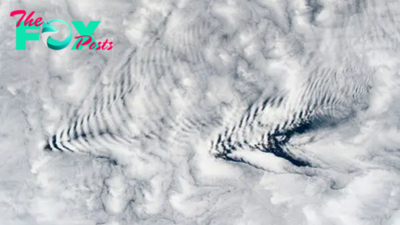Science
All El Niños will be extreme if climate change isn't slowed, study suggests
Extreme El Niño events may become the new normal, new research suggests.
During these strong El Niños, the west coast of South America experiences heavy rainfall that can lead to floods and landslides, while western Pacific landmasses such as Indonesia and Australia undergo periods of drought.
The world is on track to warm 5.2 degrees Fahrenheit (2.9 degrees Celsius) by 2100 if current greenhouse gas emission trends continue, according to a 2023 United Nations report. But the new modeling study suggests that if the planet warms a little more than that — 6.6 F (3.7 C) — 90% of El Niños will rival the strongest ones on record, such as the El Niño that occurred between 1997 and 1998. That El Niño was responsible for 23,000 deaths and billions of dollars in damage due to storms, droughts, floods and disease outbreaks caused by flooding, according to a 1999 estimate published in the journal Science.
"If we would end up in a state where each El Niño is an extreme eastern Pacific El Niño, this would just have huge social economic impacts in the Pacific region," said the study's lead author, Tobias Bayr, who conducted the research while a scientist at the GEOMAR Helmholtz Centre for Ocean Research in Germany.
Related: 'The last 12 months have broken records like never before': Earth exceeds 1.5 C warming every month for entire year
The effect of climate change on the El Niño and La Niña cycle has been hotly debated. Some early models suggested that a warming world might be in a permanent state of El Niño, in which the trade winds that blow around the equator weaken and the waters of the eastern Pacific get warmer.
This ocean warming has broad-ranging climate and weather impacts. Heat from the water leaks into the atmosphere, raising average global temperatures. The jet stream over North America moves southward, drying the Pacific Northwest and causing increased rainfall in the southern portion of the U.S. Some of the most dire impacts are in the Southern Hemisphere, with extreme precipitation in South America and drought and wildfire on the opposite side of the Pacific.
-

 Science19h ago
Science19h agoGet one of our favorite star projectors for less than $20 at Amazon
-

 Science19h ago
Science19h agoJuly's full 'Buck Moon' rises this week — and signals a big lunar transition is on the way
-

 Science1d ago
Science1d agoEarth's plate tectonics fired up hundreds of millions of years earlier than we thought, ancient crystals reveal
-

 Science1d ago
Science1d agoJoin Space.com's 25th Anniversary Virtual Panel on July 17: The Next 25 Years of Space Exploration — To the Moon, Mars and Beyond
-

 Science1d ago
Science1d ago20 satellites fall from sky after catastrophic SpaceX rocket failure, triggering investigation
-

 Science1d ago
Science1d agoBlack hole growth is slowing down in the universe. New research could help explain why.
-

 Science1d ago
Science1d agoWhat would happen if a black hole wandered into our solar system?
-

 Science2d ago
Science2d agoEarth from space: Gravity waves spark pair of perfect cloud ripples above uninhabited islands





















